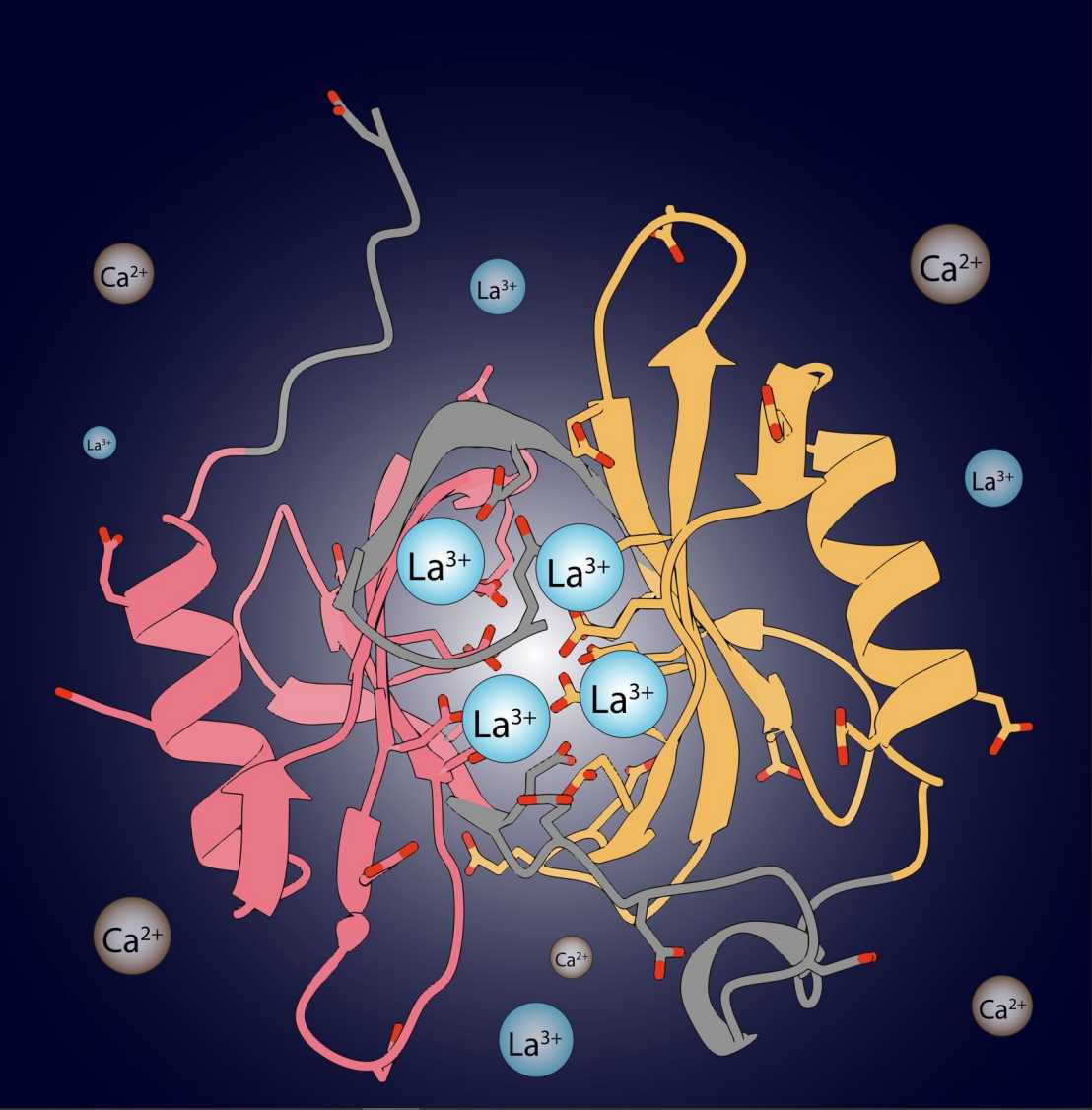Rare-earth elements, also known as lanthanides, are, contrary to what the name suggests, not rare. They are, however, challenging to purify from the environment. Only in the past few years, it became evident that life has found solutions to harness these elements for itself. In a recent paper, the Vorholt lab describes the discovery of lanpepsy, a protein which specifically binds lanthanides and discriminates them from other elements.

Lanthanides are essential metals for today's technologies, including electronic devices such as smart phones. Their mining is associated with pressing ecological and geopolitical issues. Because of their similarity to other metal ions, their purification from the environment is cumbersome and economical only in a few locations. Biological materials with high binding specificity for lanthanides could offer a way forward.
Recent findings suggest that nature has evolved a variety of proteins or small molecules to scavenge lanthanides. Scientists have discovered that certain bacteria, methylotrophs that convert methane or methanol, have enzymes that require lanthanides in their active sites. Since then, the identification and characterization of proteins involved in sensing, uptake, and utilization of lanthanides, has become an emerging field of research.
To identify novel actors in the lanthanome, Jethro Hemmann and Philipp Keller together with collaborators from D-BIOL and the laboratory of Detlef Günther at D-CHAB studied the lanthanide response of the obligate methylotroph Methylobacillus flagellatus. By comparing the proteome of cells grown in the presence and absence of lanthanum, they found several proteins not previously related to lanthanide utilization. Among them was a small protein of unknown function, which the team now named lanpepsy. In vitro characterization of the protein revealed binding sites for lanthanides with a high specificity for lanthanum over the chemically similar calcium. Lanpepsy is able to enrich lanthanides from a solution and thus holds potential for the development of bioinspired processes for the sustainable purification of lanthanides.
Link to the paper in external page"Journal of Biological Chemistry".






